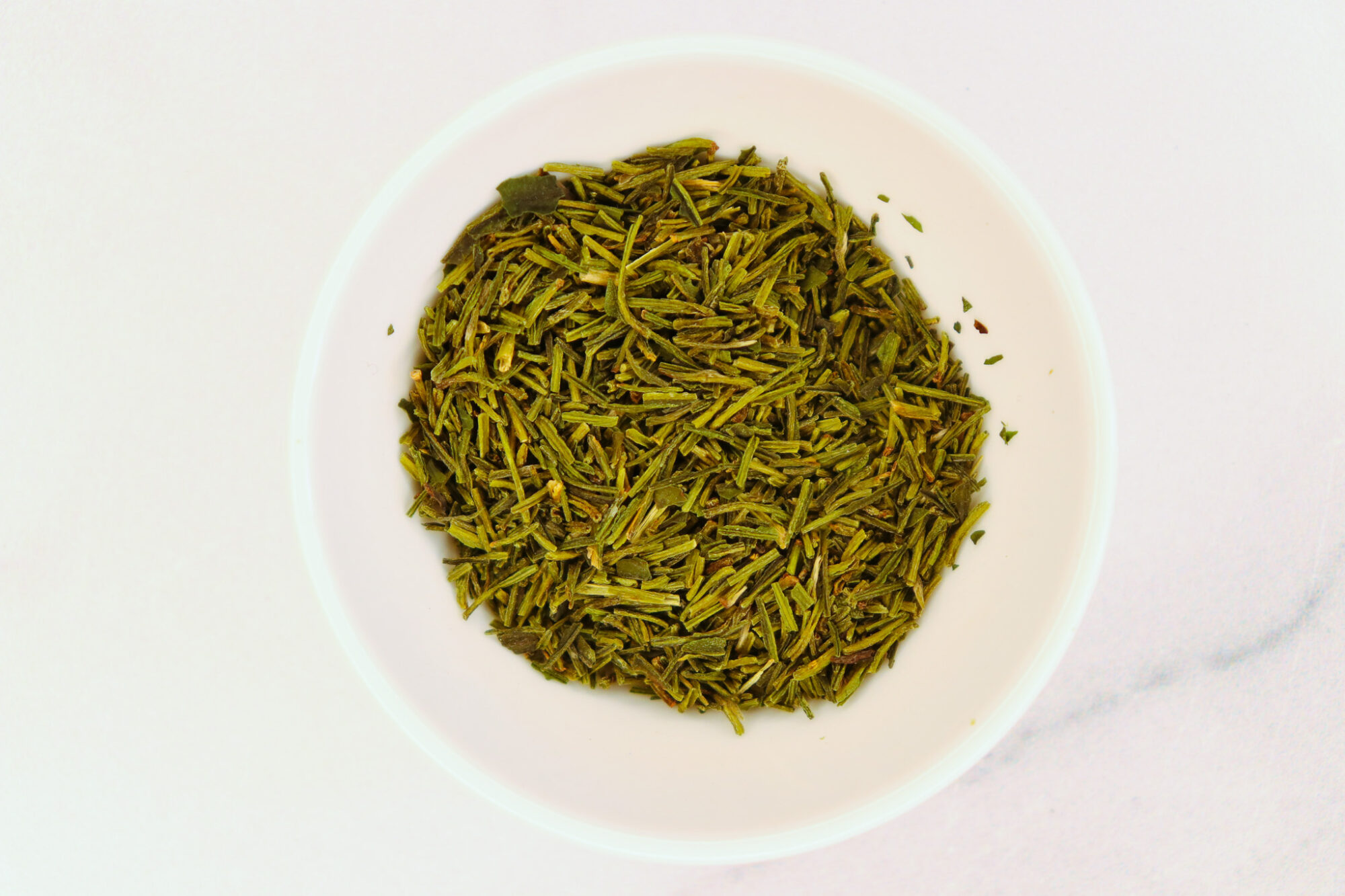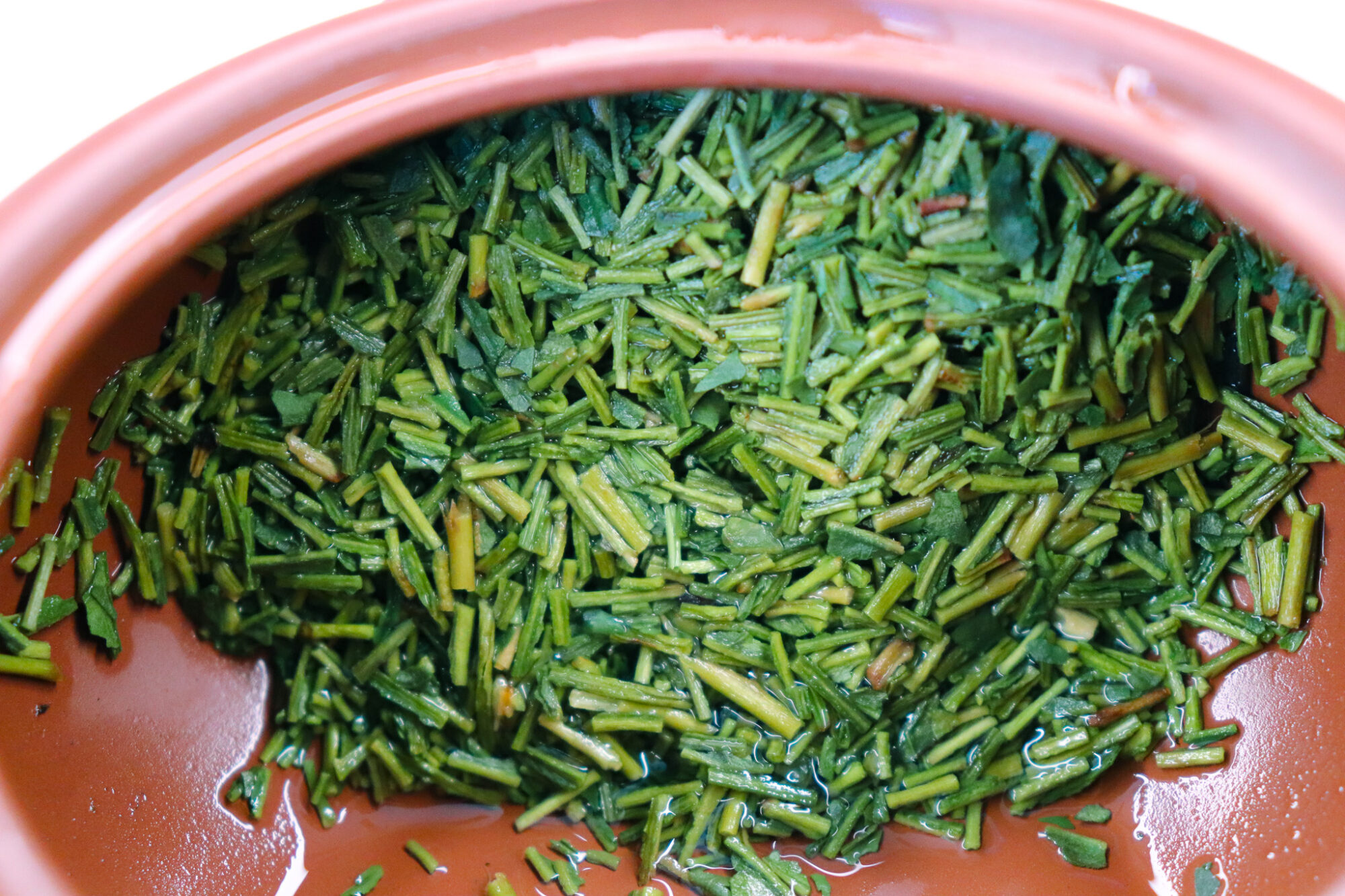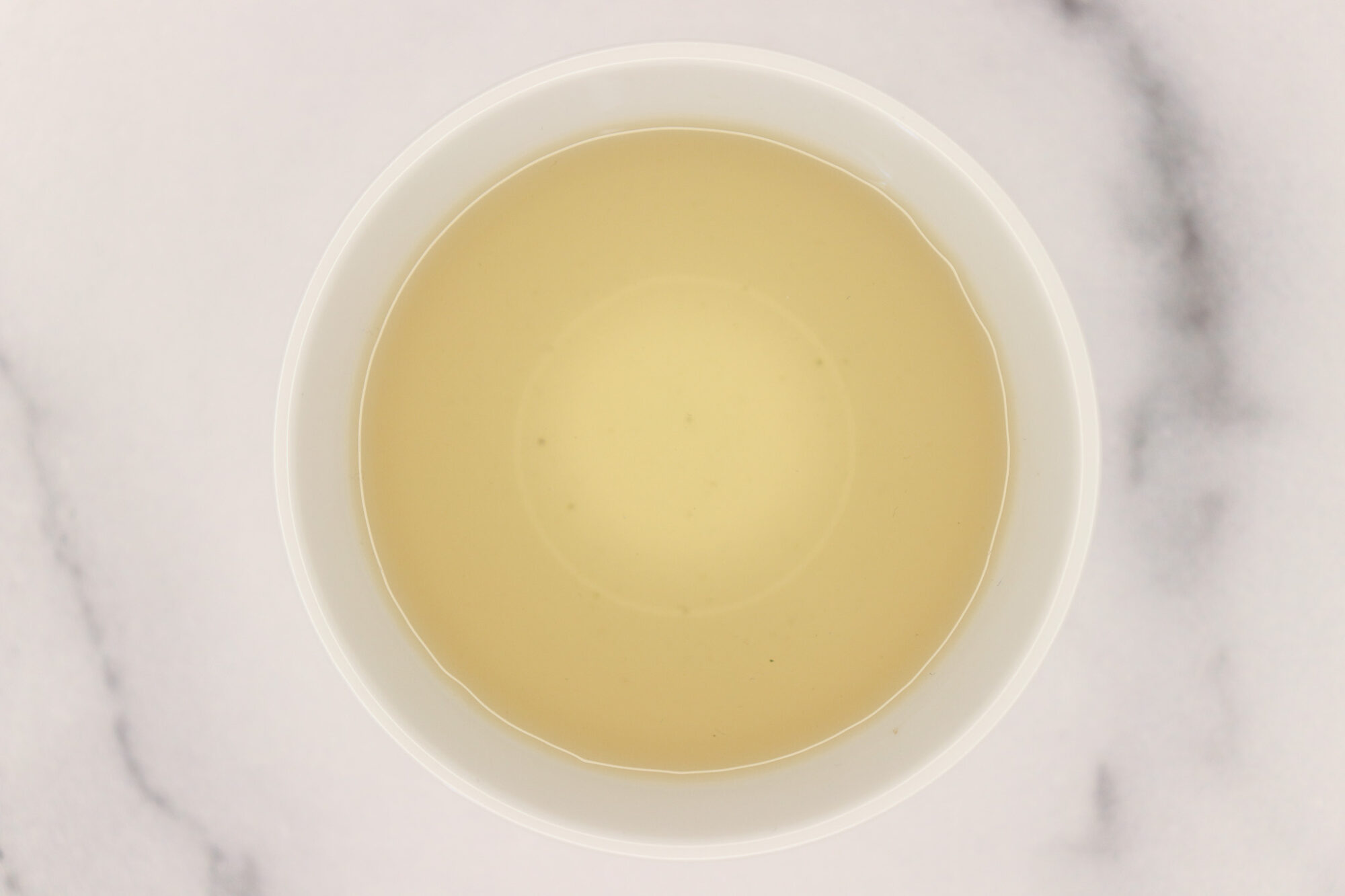Hojicha often gets the spotlight when it comes to stem teas, but kukicha is also well worth trying. Its mellow, sweet taste and easygoing nature just might surprise you. In this post, I’ll be sharing everything you need to know about the production process of kukicha, the best method of brewing, and reliable sources for purchasing it.
How Is It Made?
Kukicha is a byproduct of matcha, sencha, and gyokuro production. It is usually made from the spring and summer harvests. There is some variation between the different teas, but they are all steamed after harvesting to halt oxidation and then dried. Its name derives from the Japanese term ‘kuki’, which describes the stem that connects the leaf to the base of a new shoot.
This part is separated from the leaf tea during processing primarily to maintain a more visually consistent product. Traditionally, this was done by winnowing. Stems are lighter than leaves, so they will blow away when a current of air is passed over them. It is more commonly done by a color sorting machine today.

Every producer’s style is a bit different, so while kukicha is mostly made out of stems, you might see more or less leaves mixed in. Kukicha has a few different names. In Kyushu, it is called shiraore. In Kyoto, it is called karigane. The name means wild goose and refers to the resemblance to branches that wild geese float on in the sea. Kukicha can also be roasted like hojicha. You might see these listed as kukihojicha. Ishikawa prefecture will often label it Kaga Boucha.

Where Is It From?
Kukicha can be found in all of Japan’s tea-growing regions since it can be made during the production of sencha, gyokuro, or matcha. The tea that I used for the pictures in this blog post was sourced from Obubu Tea Farm in Wazuka.
What Does It Taste Like?
Kukicha is aromatic with a mellow and sweet taste. I often find hints of citrus when I drink them. There might be a marine quality, and there is usually no bitterness. Roasted versions of this tea will have slightly smoky, woody, and vanilla notes. Kukicha is lower in caffeine than leaf teas, so it is a good choice for sipping later in the day. It is a good source of L-theanine.

How to Brew It
Kukicha can be treated similarly to other Japanese green teas. That being said, it is more forgiving since it doesn’t contain tea leaves. Kyusu is the traditional way of brewing. You can also place an infuser basket into your cup or teapot. I recommend using 2 to 3 grams of tea for every 6-8oz of water. Water that is 158-180℉ and an infusion time of 1 minute is a good starting point. Roasted versions can tolerate an even higher water temperature. Kukicha can be resteeped 2-3 times. I also really enjoy cold brewing this tea.
Where to Buy It
Here are some of my favorite places to purchase kukicha from.
Have you ever tried kukicha before? What’s your favorite way to brew it? I’d love to hear from you in the comments below!
Help Support This Site

Please support my work in tea by joining my Patreon community. For $2-$5 a month, you’ll receive access to exclusive behind-the-scenes content, my private Discord server, surprise quarterly packages, and more!
